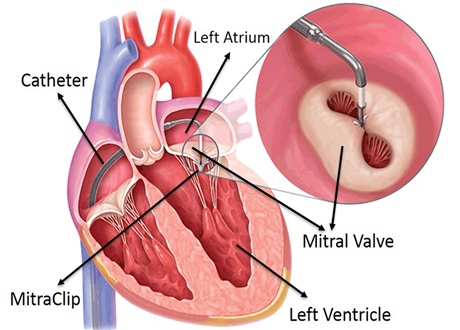Dr. Vivek Kumar is the pioneer Percutaneous Valve Implantation including TAVI Doctor in South Delhi and provides the latest Percutaneous Valve Implantation including TAVI Treatment in Delhi.
TAVI OR TAVR
Transcatheter aortic valve Implantation/Transcatheter aortic valve Replacement
Many patients have no symptoms of any disease that has a valve disease. During any diagnostic test, such as an ECG or an echo, it is discovered that an individual has a valve disease. Chest pain, fatigue, light-headedness, shortness of breath, or syncope may be symptoms of valve disease or a heart problem.
Some people with mild valve problems may live a long and full life, but once the valve disease progresses to the Aortic stenosis stage, a replacement or repair procedure is required. Is required.
If the valve is in good condition, it is usually preferable to repair it with Balloon Valvuloplasty. If the valve's condition is such that it cannot be repaired, or if the patient's condition is such that By-Pass surgery is not an option, then best option is Valve Replacement.

It can be done by two procedures
- Open Heart Surgery
- Surgery that is as little as possible invasive Because of its advantages over open heart surgery, minimally invasive surgery is now the best option.
TAVI stands for transcatheter aortic valve implantation.
- It is one of the most recent and secure valve replacement options available today.
- Tavi is a minimally invasive aortic valve replacement procedure.
TAVI for Aortic Stenosis – Before and After
This procedure is identical to stenting inside the artery.
- General anaesthesia will be administered prior to the procedure to ensure your comfort during the procedure, which typically takes 1-2 hours to complete.
- A catheter, which is a thin wire with a balloon at the tip, is inserted into the artery and is guided to the diseased valve via a cut in the groyne or under your collarbone.
- To make room for a new tissue valve, the balloon is inflated at the ruptured site.
- Some implanted valves have a spring to load themselves or can be expanded by inflating the balloon.
- The catheter is then removed after the balloon has been deflated.
- The new valve replaces the old one and begins regulating blood flow.
After the procedure
- You will be transferred to a recovery room for 3-4 hours before being sent home after a three-day rehabilitation period.
- You may experience pain at the site of the cut and are advised to take pain relievers.
- It takes approximately 2-3 weeks to return to normal life or to be fully recovered. To avoid clot formation, you must take blood thinning medication.

